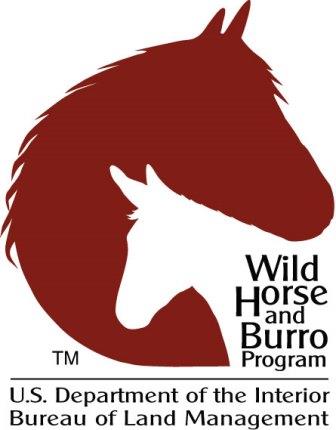2016 Eagle and Silver King Emergency Wild Horse Gather
Gather Progress as of December 29, 2016: The Eagle and Silver King Emergency Wild Horse Gather concluded shortly before noon on Wednesday, December 28, 2016.
Remaining horses were shipped to and received at the BLM’s Indian Lakes off-range corrals in Fallon, Nevada, where they will be offered for adoption to qualified individuals. Un-adopted horses will be placed in long-term pastures where they will be humanely cared for and treated, and retain their “wild” status and protection under the 1971 Wild Free-Roaming Horses and Burros Act.
Purpose of Gather:
The Bureau of Land Management (BLM) Ely District is scheduled on Tuesday, Dec. 20, 2016, to begin gathering and removing approximately 100 excess wild horses from public and private lands adjacent to U.S. Highway 93 and State Route 322 in and outside the Eagle and Silver King Herd Management Areas (HMAs) in eastern Nevada. The helicopter gather is necessary to provide for public and animal safety.
Details of Gather:
The District will remove up to 50 wild horses from between Pioche and Eagle Valley that have moved outside the Eagle HMA in search of forage. Appropriate Management Level (AML) for the Eagle HMA is 100-210 wild horses. The current population is 1,322 wild horses.
The District will remove up to 50 wild horses from the Bennet Springs area southwest of Panaca that have moved outside the Silver King HMA in search of forage. AML for the Silver King HMA is 60-128 wild horses. The current population is 912 wild horses.
The gather is expected to take four days to complete. A veterinarian will be on call during gather operations, which will be conducted by a contractor.
The gathered animals will be transported to the BLM's Indian Lakes off-range corrals located in Fallon, Nev., where they will be offered for adoption to qualified individuals. Un-adopted horses will be placed in long-term pastures where they will be humanely cared for and treated, and retain their “wild” status and protection under the 1971 Wild Free-Roaming Horses and Burros Act. The BLM does not sell or send any horses to slaughter.
Public Observation Opportunities:
The BLM is committed to providing as much public access as possible; however, public safety is our first priority. For more information, contact Chris Hanefeld, BLM Ely District public affairs specialist, at (775) 289-1842 or [email protected].
Background:
The 670,000-acre Eagle Herd Management Area (HMA) is located in Lincoln County, about 30 miles north of Caliente, Nev. Appropriate Management Level (AML) for the Eagle HMA is 100-210 wild horses. The current population is 1,322 wild horses.
The 606,000-acre Silver King HMA is located in Lincoln County, about 30 miles north of Caliente, Nev. AML for the Silver King HMA is 60-128 wild horses. The current population is 912 wild horses.
The Eagle and Silver King HMAs are within the Great Basin geographical region, which is one of the largest deserts in the world. The Great Basin is effectively cut off from the westerly flow of Pacific moisture. Crossing air masses created by the Sierra and Cascade mountain ranges provide cooling and precipitate much of the moisture out. The result for most of the Great Basin is a Dry Steppe cold climate classification typical of middle latitude, semi-arid lands where evaporation potential exceeds precipitation throughout the year.
The HMAs consist of large mountain ranges bounded by valleys. Elevations range from about 4,600 feet in the valleys to as high as 9,296 feet on Mt. Wilson. Summertime temperatures can exceed 100 degrees Fahrenheit, and winter lows can fall well below zero or lower. Precipitation occurs mostly in the winter in the form of snow with sparse summer moisture. Summer rains are localized, short and very intense while winter/spring rains are gentler and over a wider area. Annual average precipitation varies from approximately 14 inches at the higher elevations to 8 inches or less at the lower elevations. Water sources are limited to a very few natural springs and man-made wells. There are also a few small perennial streams within the HMAs. As a result of limited water, the HMAs are prone to drought every few years.
Vegetation in the HMAs are characteristic of the Great Basin with dominant plants having evolved to survive the extremes. Typical vegetation varies according to elevation with the upper mountain slopes generally covered with stands Aspen, fir and open meadows. Through the mid elevations, pinion and juniper trees are dominant and often form closed stands which prevent other vegetation from growing. As the elevation and moisture supply falls, the vegetation shifts towards shrub dominated community. Sagebrush is the most common shrub along the pinion juniper perimeter. Sagebrush gives way to white sage, black sage, saltbrush, and other “salt Desert shrub” type communities.
For more information on the Wild Horse and Burro Program, call 1-866-468-7826 or email [email protected].
